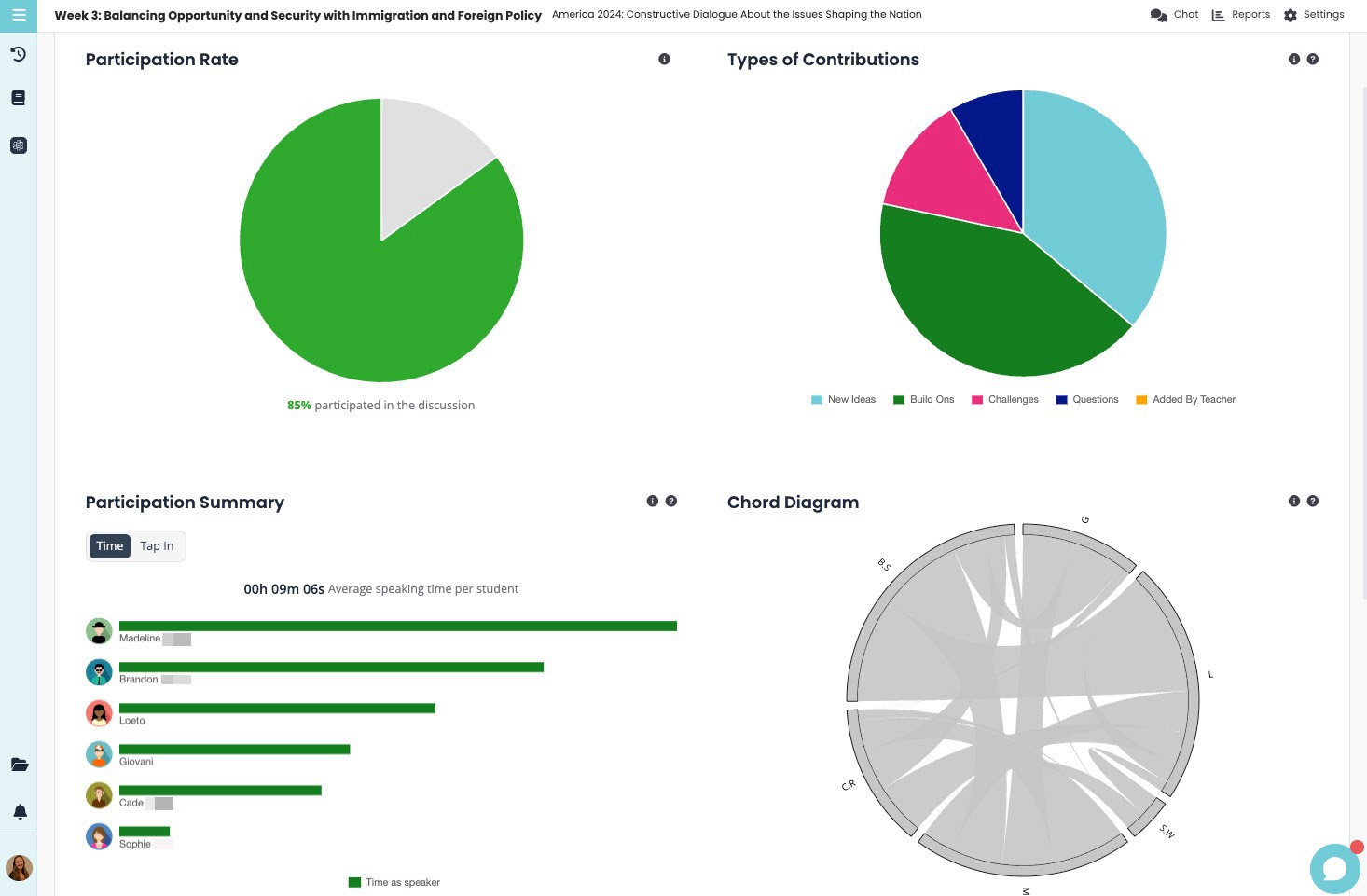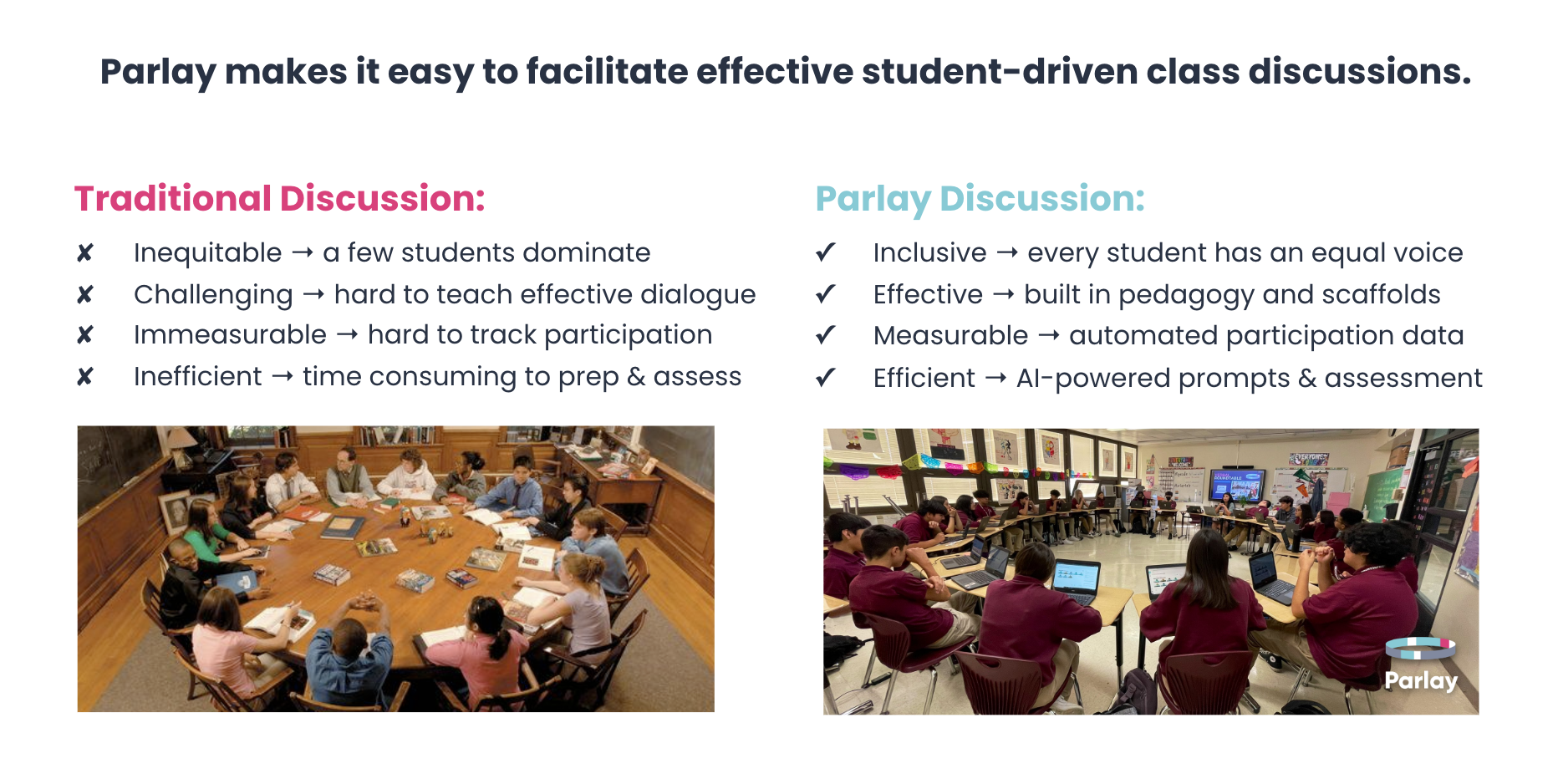
Verbal discussions can be unfamiliar and daunting for both teachers and students. Here are some of the top reasons why teachers choose to run Verbal RoundTables:
- The Verbal RoundTable gives ALL students an equal chance to jump into the conversation and build the skills of discussion, particularly shy/quiet students. Students know that there's a predictable structure to when they get to share their idea. The tap in system help's build self awareness of how a student contributes to the conversation, both with frequency and types of contributions.

- The benefits of student-driven discussions are well documented - they create a space for students to take ownership over the conversation, with the teacher in a facilitator role. Students lead the conversation but you as the teacher can still manage the speaking queue as needed. You can view student notes, nudge for direct feedback, tap in to share your input, assess and take your own notes during the conversation.
- Transcribe your class discussions! This keeps a running record of what was said by each student.
- The tap in types (new idea/challenge/build on/question) scaffold discussion skills and guide students to be intentional about their contributions. You will notice that students will begin using that language explicitly: "I want to build on what Alex said..." or "I have a question about...".

- You can think of the Verbal RoundTable as training wheels for a class to build the skills for student-driven discussion. If your class is strong at balanced, student-driven discussions, you might not need the Verbal RoundTable!
- Lastly, you get rich data visualizations (see below). Participation rates, types of contributions, speaking time, flow of conversation, a word cloud of major themes, and a summary of the content of the conversation. These help engage students in metacognition about their own participation but also the class dynamics as well.
.jpg)
It's easy to get started!
Check out these topics in the Parlay Universe!

Continue exploring the Verbal RoundTable by clicking the links below:
